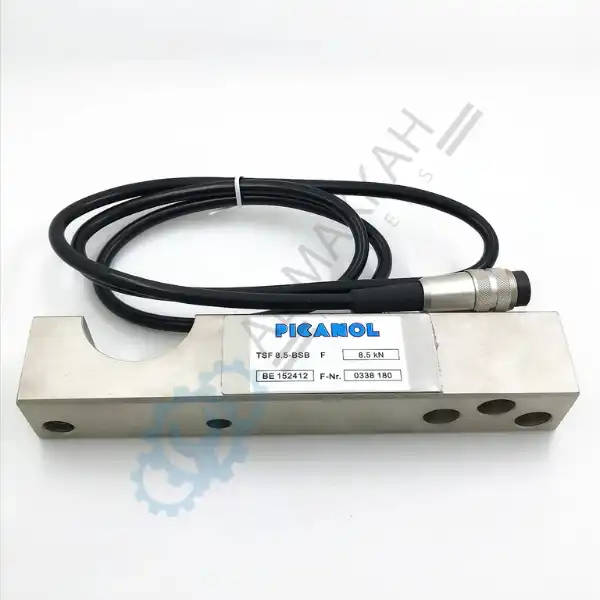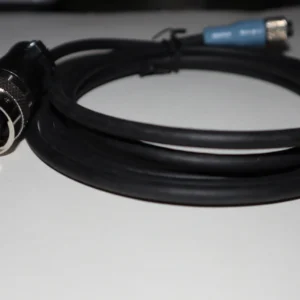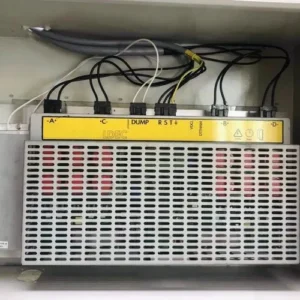Description
The BE152412 Load Cell is a crucial sensor tailored for the Picanol Omniplus 800 weaving machine, providing precise tension control of warp yarns. This load cell ensures consistent fabric quality by delivering accurate real-time monitoring and feedback to the loom’s control system. Engineered to withstand the harsh conditions of industrial textile manufacturing, the BE152412 Load Cell offers reliability and durability, making it an essential component for maintaining optimal loom performance.
Specifications:
- Capacity: Typically designed to measure forces in the range of 0-500 N, though this can vary based on application needs.
- Output Sensitivity: Around 2 mV/V, providing high accuracy in tension measurement.
- Operating Voltage: Commonly operates at 5V to 12V DC.
- Accuracy Class: C3 or higher, ensuring precise tension measurement.
- Material: Constructed from stainless steel for corrosion resistance and durability.
- Temperature Range: Operates effectively in temperatures ranging from -10°C to 50°C.
- Connection Type: 4-wire or 6-wire configurations, depending on the specific setup of the loom.
- Mounting Type: Designed for easy installation in the designated location on the Omniplus 800 loom.
How do I install a load cell in a Picanol machine?
Here’s a general guide for installing a load cell in a Picanol weaving machine:
- Preparation:
- Power Down: Ensure that the loom is turned off and disconnected from the power source to avoid any electrical hazards.
- Gather Tools: You’ll need tools such as a wrench or screwdriver, depending on the mounting hardware used.
- Locate the Mounting Area:
- Identify Mounting Location: Refer to the loom’s service manual to locate the designated mounting area for the load cell. This is typically where tension measurement is required, such as near the warp beam or tensioning rollers.
- Remove Existing Components:
- Disassemble: If there’s an existing component in the location where the load cell will be installed, carefully remove it. This might include removing covers or other hardware.
- Install the Load Cell:
- Position the Load Cell: Place the load cell in the designated mounting area. Ensure that it is aligned correctly and that there is no obstruction.
- Secure the Load Cell: Use the appropriate mounting hardware to secure the load cell in place. Tighten bolts or screws as needed, but avoid over-tightening, which could damage the load cell.
- Connect Electrical Wiring:
- Wiring: Connect the load cell’s electrical wiring to the loom’s control system. Typically, load cells use a 4-wire or 6-wire configuration. Follow the wiring diagram provided with the load cell or in the loom’s service manual.
- Check Connections: Ensure that all connections are secure and correctly matched according to the color codes or labels.
- Calibrate the Load Cell:
- Calibration: Once installed, calibrate the load cell using the loom’s calibration procedures. This step ensures that the load cell accurately measures and reports tension.
- Verify Readings: After calibration, check the readings to confirm that they are accurate and within the expected range.
- Reassemble and Test:
- Reassemble: If any components were removed, reassemble them.
- Test the Loom: Power up the loom and perform a test run to ensure that the load cell is functioning correctly and providing accurate tension measurements.
- Consult Documentation:
- Manuals and Support: Always refer to the Picanol service manual or consult with technical support for specific instructions and troubleshooting.
What is the purpose of a load cell in weaving equipment?
Purpose of a Load Cell in Weaving Equipment
A load cell in weaving equipment serves several important functions:
- Tension Measurement:
- Warp Yarn Tension: The primary purpose of a load cell is to measure the tension of the warp yarns as they pass through the loom. Maintaining the correct tension is crucial for producing fabric with consistent quality and preventing issues like yarn breakage or uneven weaving.
- Process Control:
- Feedback for Adjustment: The load cell provides real-time data on yarn tension to the loom’s control system. This data allows for automatic adjustments to be made to the tensioning mechanisms, ensuring optimal performance throughout the weaving process.
- Quality Assurance:
- Fabric Consistency: By monitoring and controlling yarn tension, the load cell helps in achieving uniform fabric texture and quality, which is essential for meeting production standards and customer requirements.
- Preventative Maintenance:
- Early Detection: Load cells can help in identifying problems such as excessive tension or irregularities in the yarn feed, enabling operators to address issues before they lead to more significant equipment failures or quality defects.
- Operational Efficiency:
- Enhanced Performance: Accurate tension control improves the efficiency of the weaving process, leading to better productivity and reduced downtime.
By installing and utilizing a load cell, you ensure that your weaving equipment operates efficiently and produces high-quality fabric consistently.






Reviews
There are no reviews yet.